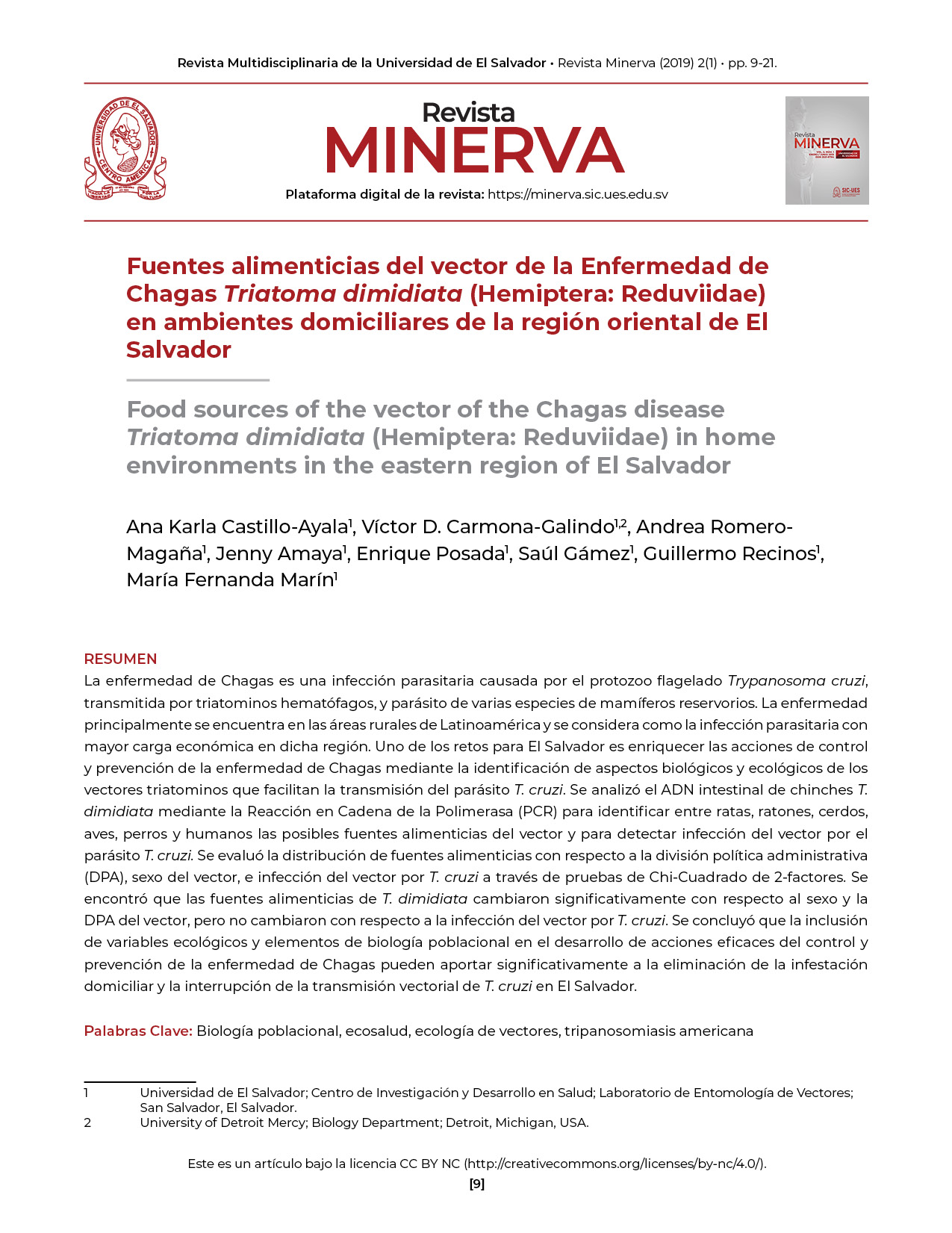Abstract
Chagas disease is a parasitic infection caused by the protozoan Trypanosoma cruzi that is transmitted by hematophagous triatomine insects and maintained by means of several mammal-reservoir species. The disease is found throughout rural areas of Latin America and is considered the most costly parasitic infection of the region. One of the principal challenges for El Salvador is to enrich existing management plans and control systems for Chagas via the identification of biological and ecological factors associated with the T. dimidiata vector transmission of the T. cruzi parasite. We analyzed intestinal DNA of T. dimidiata insects using Polymerase Chain Reaction (PCR) techniques to identify the possible feeding sources of the vector from among rat, mouse, pig, bird, dog and human reservoir-types as well as to detect infection of the vector by the T. cruzi parasite. We evaluated the distribution of feeding sources with respect to geo-political distribution of the vector, sex of the vector, and infection of the vector by T. cruzi using 2-factor Chi Squares analyses. We found that feeding sources of T. dimidiata insects changed significantly with respect to the sex of the vector as well as the geo-political distribution of the vector but did not change with respect to the infection of the vector by T. cruzi. We conclude that the addition of ecological variables and population biology parameters in the development of management and control systems for Chagas disease in El Salvador can significantly enhance the eradication of domiciliar infestations and interrupt the vector transmission of the T. cruzi parasite.

This work is licensed under a Creative Commons Attribution 4.0 International License.
Copyright (c) 2019 Authors who publish in Revista Minerva agree to the following terms: Authors continue as owners of their work, assigning only dissemination rights to Minerva Magazine under the standards of the Creative Commons Attribution 4.0 International License (CC BY 4.0). This license allows others to mix, adapt and build upon the work for any purpose, including commercially, and although new works must also acknowledge the initial author, they do not have to license derivative works under the same terms.




